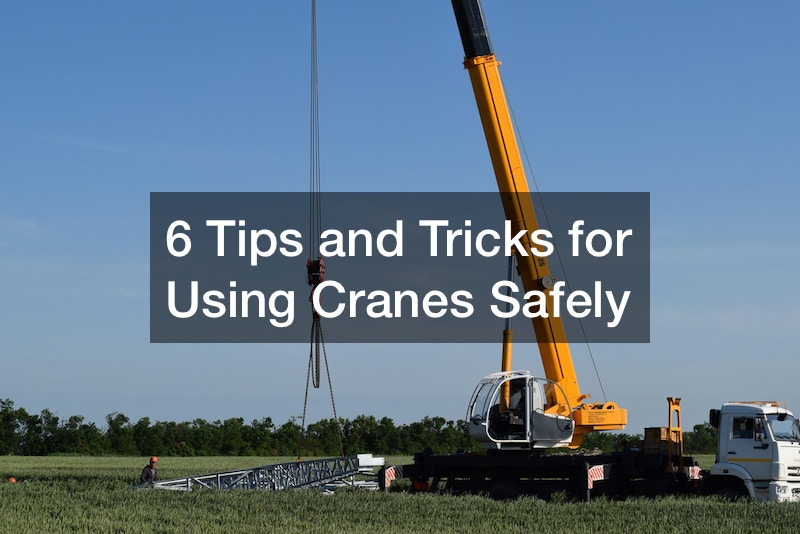
When you’re planning a construction project, it’s crucial to consider the use of a crane on the work site. Renting a construction crane can be a wise decision, but it requires careful thought. First, assess your project’s needs and specifications to determine the right crane design for the job. Different projects may require different types of cranes, and understanding their capabilities is essential.
Once you’ve chosen the appropriate crane, consider its crane footprint. This means evaluating the space available on your job site to ensure the crane can be safely positioned and operated. Rigging service is often necessary to set up and operate the crane safely and efficiently.
Modern crane use involves various safety measures, including mobile crane hoist inspections and operator training. You should be aware of these requirements to ensure a safe work environment. Working with local construction pros and machinery experts can help ensure you get the right crane set up for your job.
Overall, renting a construction crane is a valuable resource for your construction project. However, it’s vital to understand the types of cranes available, their design, and how to use them safely. Proper planning and consideration of crane footprint and rigging service will help you complete your project efficiently and without incident.

Cranes are essential heavy equipment on many job sites in a host of industries such as construction. Companies that need to use cranes on a daily basis need to be familiar with the safe use of this piece of essential piece of machinery. From getting the right ground mats to knowing how to operate and inspect cranes, there are things you and your workers can do to use them safely.

- Make sure your crane operators have the right license. Anyone on your job site who is going to be responsible for the safe operation of your crane or cranes needs to have a Certified Crane Operator license. You need to go to the National Commission for the Certification of Crane Operators (NCCCO). That is the organization that is responsible for certifying crane operators. Your workers are going to have to study up on the operations of this kind of heavy equipment. They will need to pass a test to show they have the knowledge they will beed to operate the crane safely and effectively. You will make sure your workspace is safe for everyone involved by making sure everyone has the legally required license. You also protect yourself from lawsuits should anything go wrong. Knowing how to use the crane also means knowing what the right equipment with it. For example, using the correct ground mats or outrigger pads for cranes.
- Make a checklist. One key to operating a crane safely is to put together a binder of what is needed to maintain and operate all of the equipment on your job site. Part of this binder should include information about the crane. That information should include information about it safe operation. The most important thing for that is a checklist for the steps that need to be taken each day before your workers are allowed to safely use the crane. Part of that should be to inspect the crane before every shift. Inspecting the crane includes looking over the crane mat.
- Make sure you do not overload the crane. It is tempting to think you can get more onto a crane than it can really handle. The Occupational Health and Safety Administration (OSHA) has estimated that at least 80% of all accidents working on cranes are caused because the operator of that crane overloaded it. It is easy to prevent the accidents caused by overloading the equipment, which is easy to avoid.
- Use only tight chains. Despite how skilled and experience your workforce is, the use of slack chains should be avoided at all costs. Make sure every time they load the crane they take the correct measurements and do not try to make guestimates by looking over what you have to load onto the crane. It is easy to overload a crane without even realizing it when you do not weigh everything. The wire or chain that is being used needs to be tight and not slack. You need to give your operators instructions on this.

- Have an emergency procedure in place. No matter how hard you and your staff work to prevent accidents, they do happen. It is crucial that your staff knows what to do if something goes wrong. If your crane falls off of the ground mats or crane pads, for example. Make sure everyone knows what they should do if there is an accident. Have this procedure posted and in places where everyone has access to it. You can also have cards printed up so that workers can have it with them at all times.
- Have the right safety equipment. OSHA has very specific rules and regulations regarding the safe operation of crane equipment. You need to have the appropriate lift protection and prevention equipment to keep your workers safe from falls, which are some of the most common accidents on worksites around the country. You need to provide safety equipment needs to include protection for all of the workers who work around the crane as well as on it. They should have the appropriate foot, eye, hand and head protection at all times.
Cranes and ground mats are essential heavy equipment for a number of industries around the country. These tips can help you keep your workers safe from accidents.
